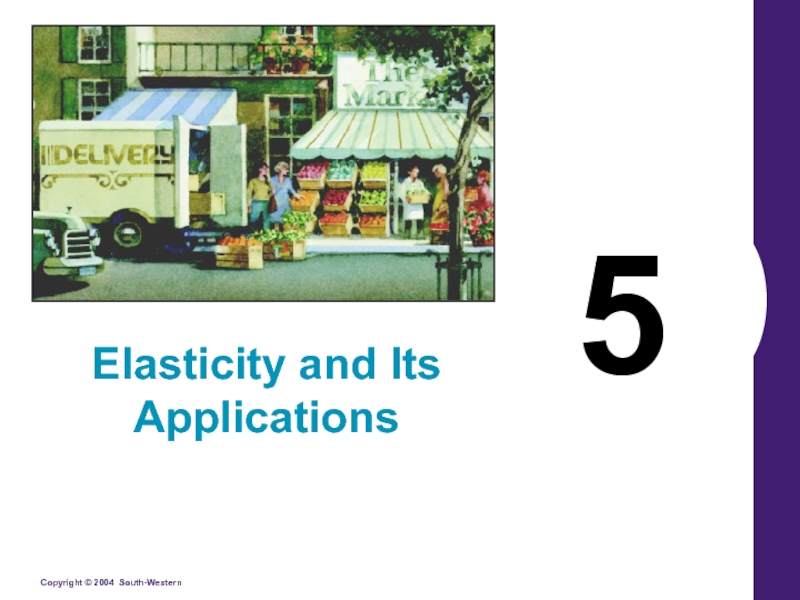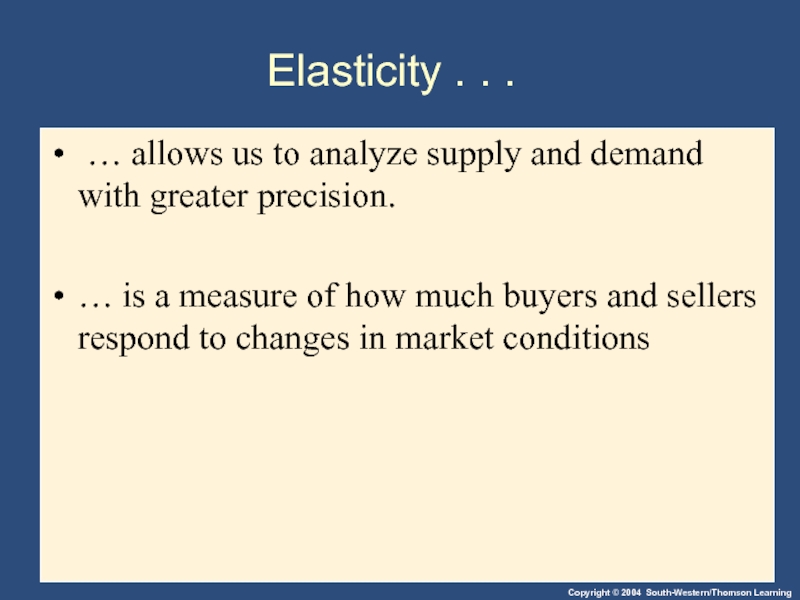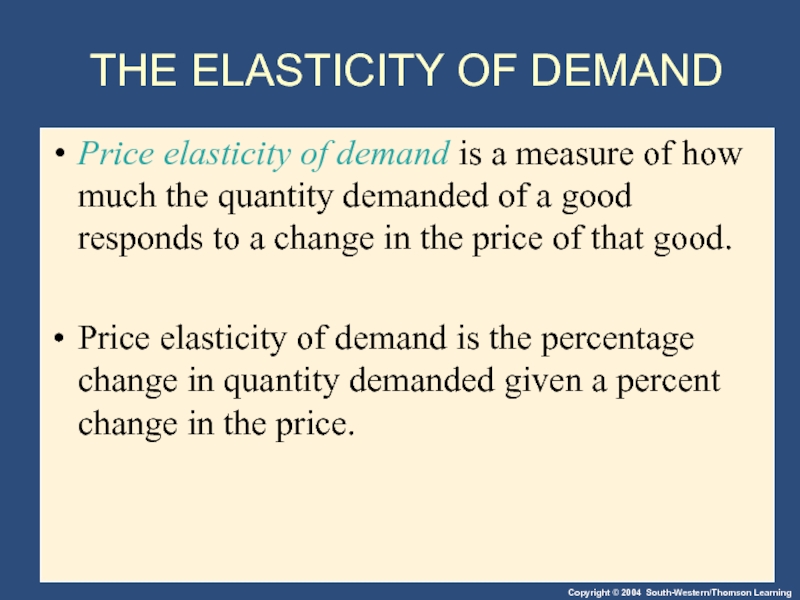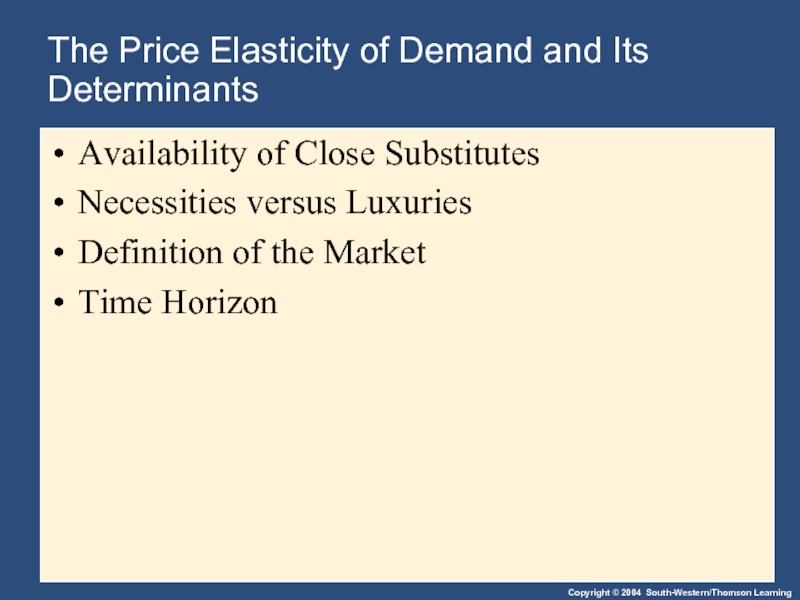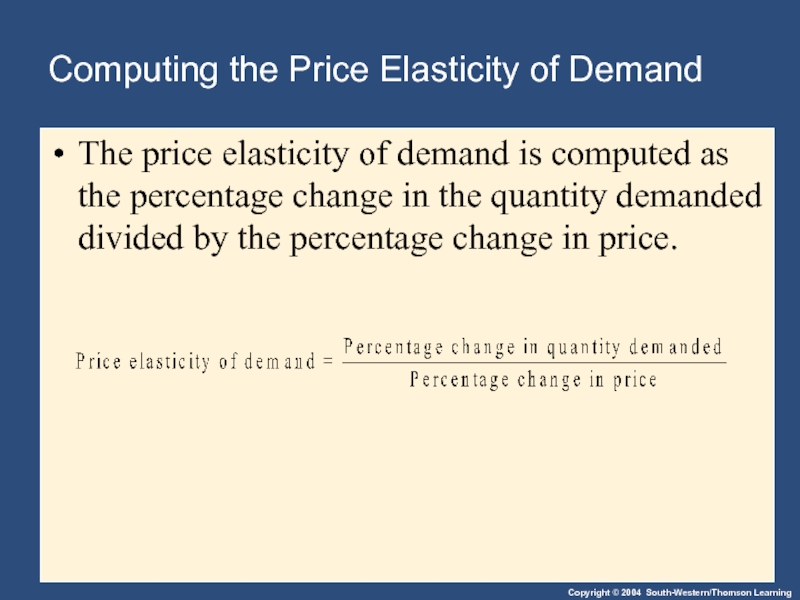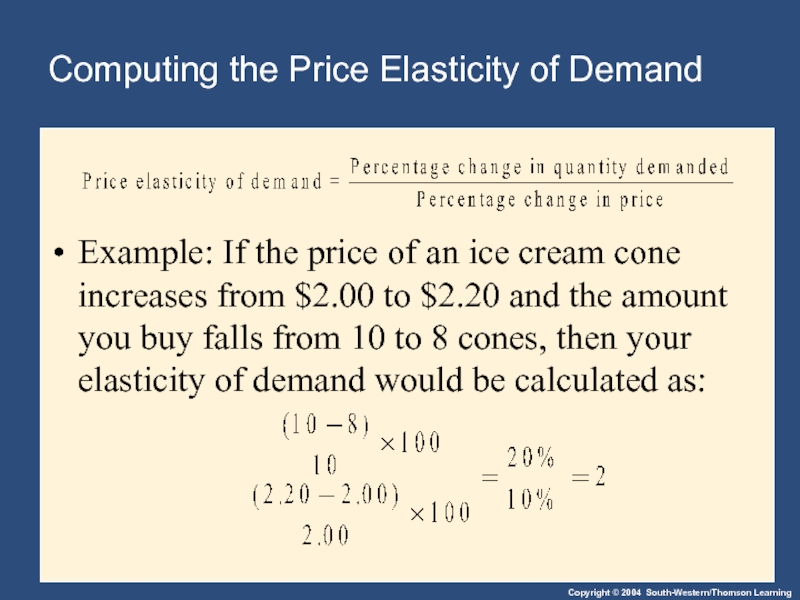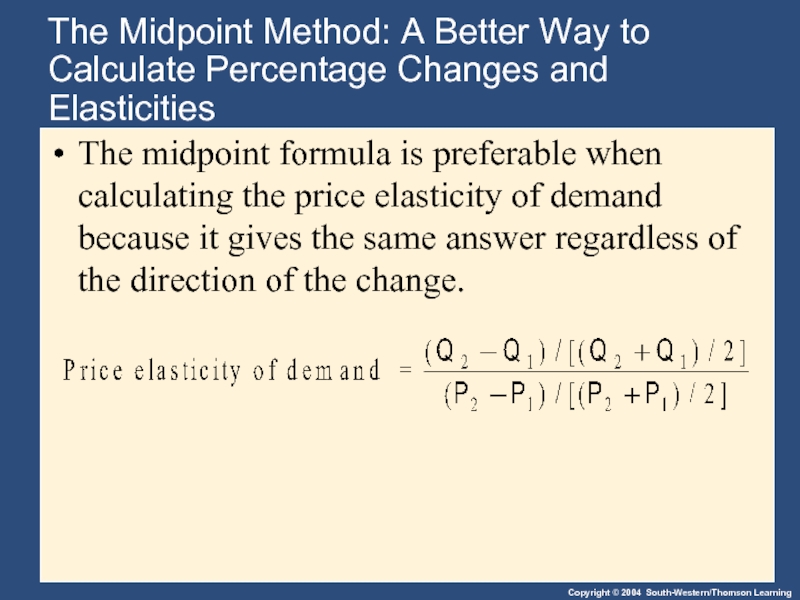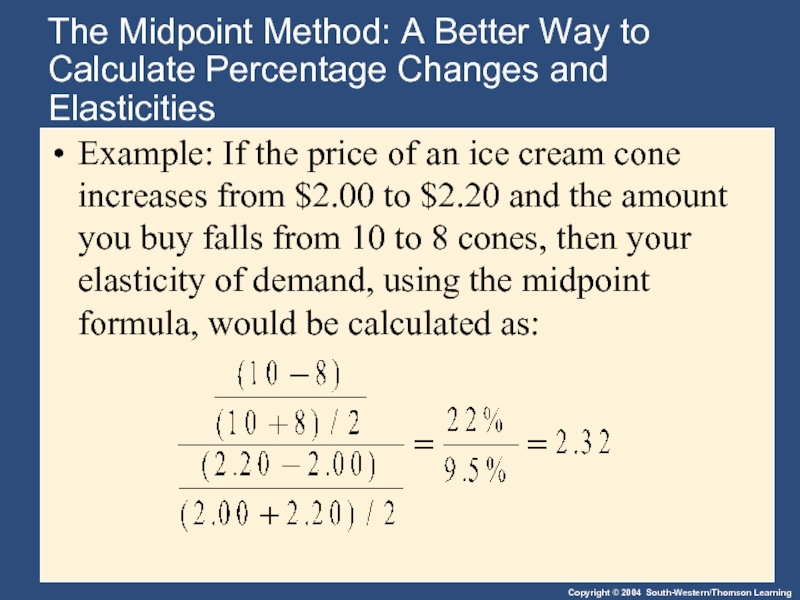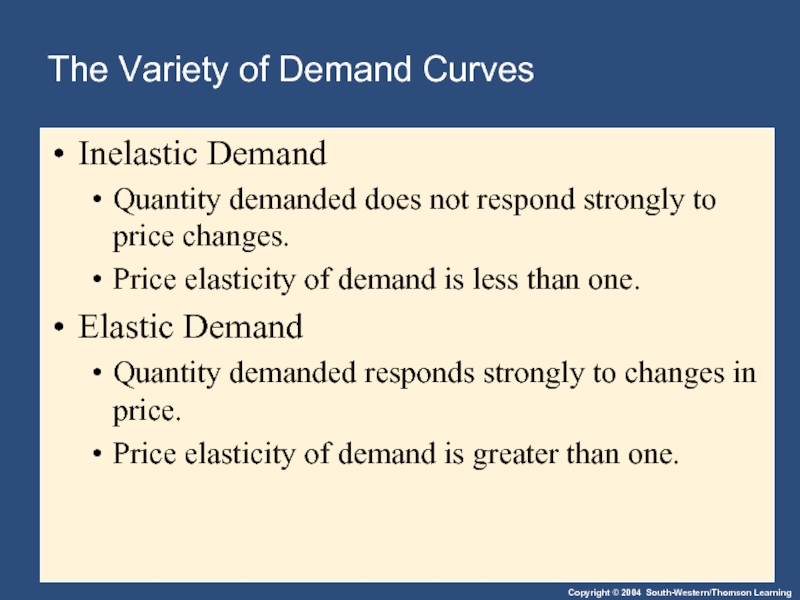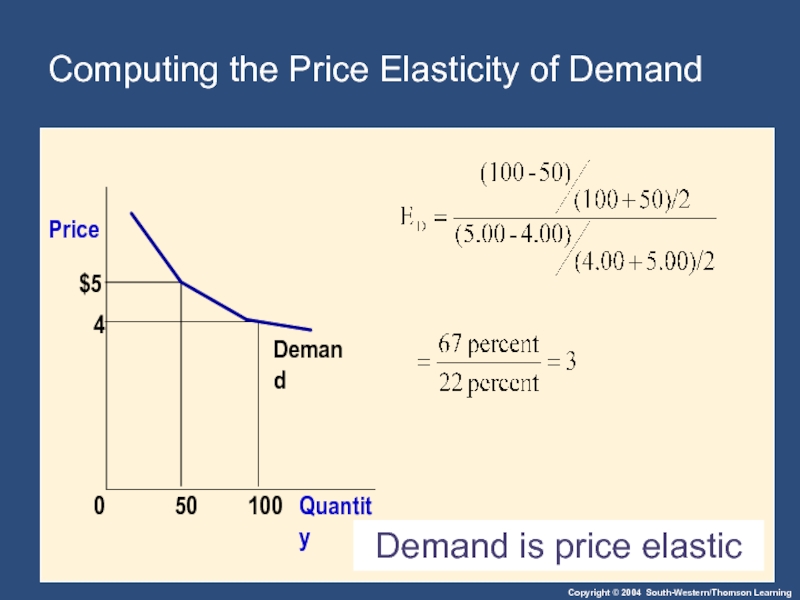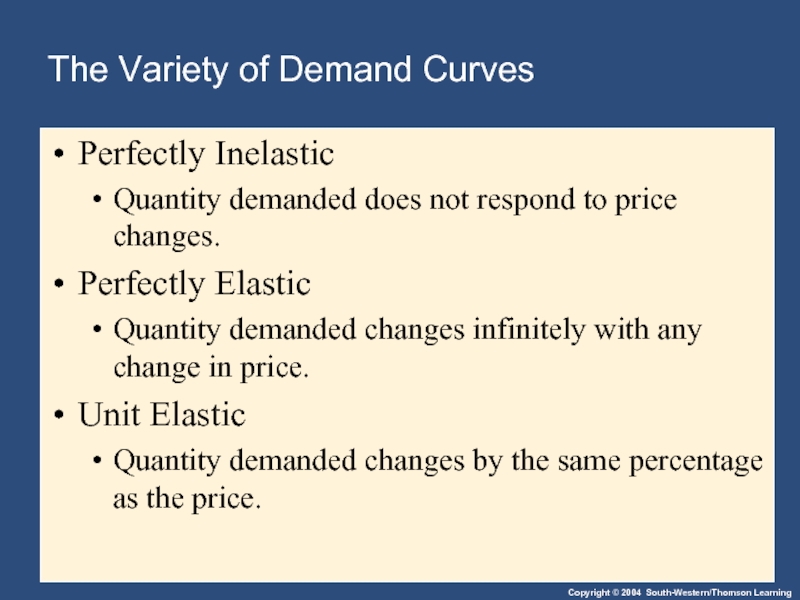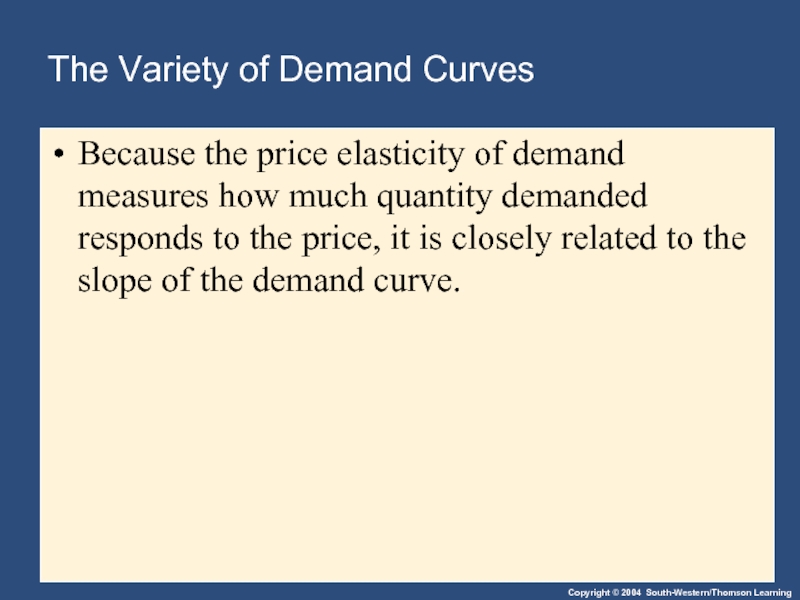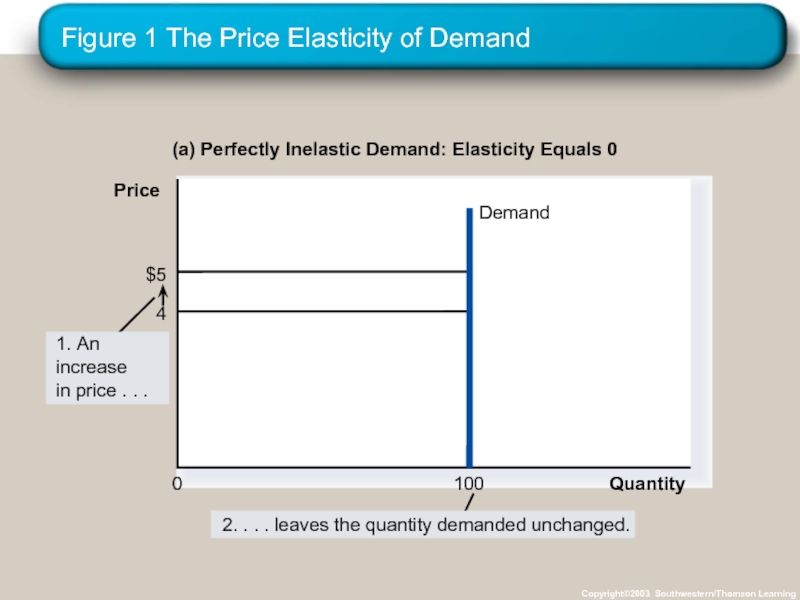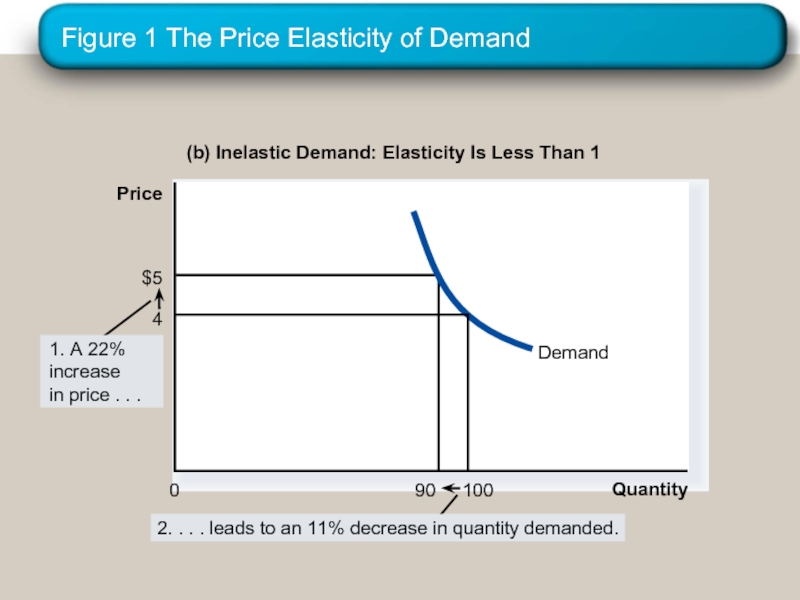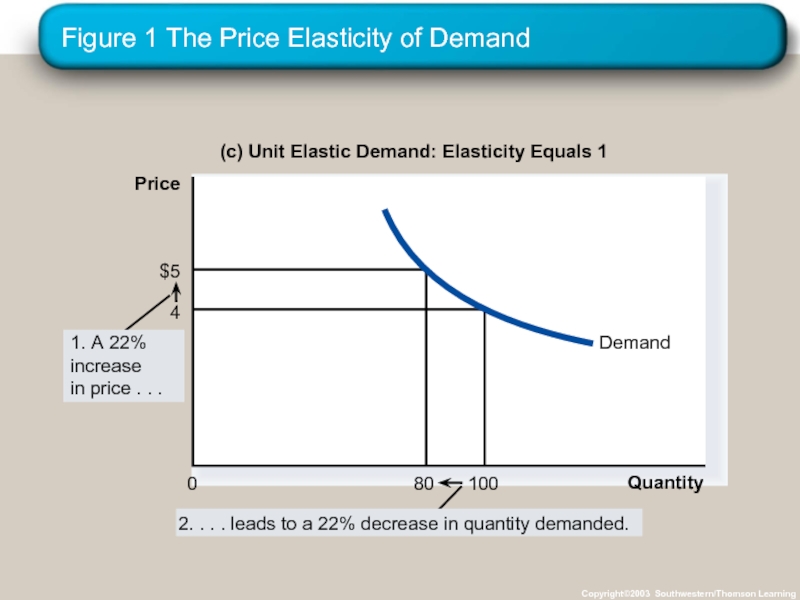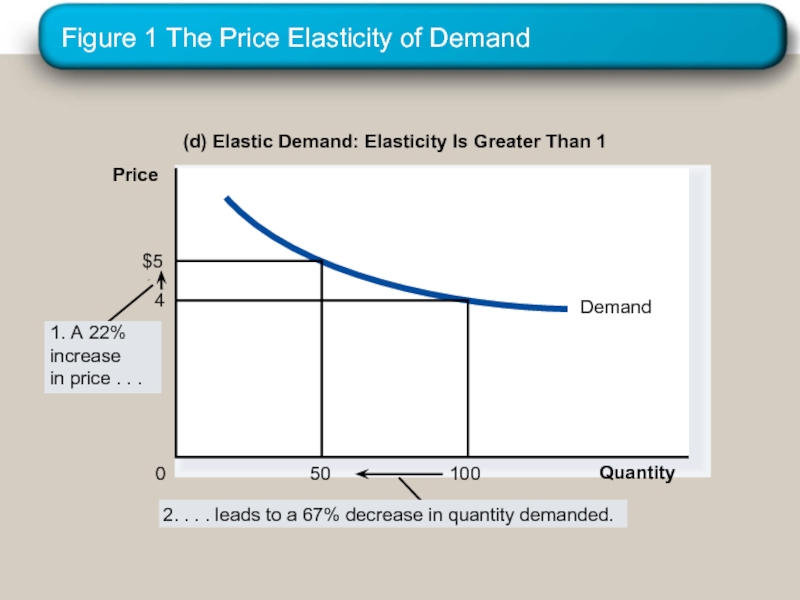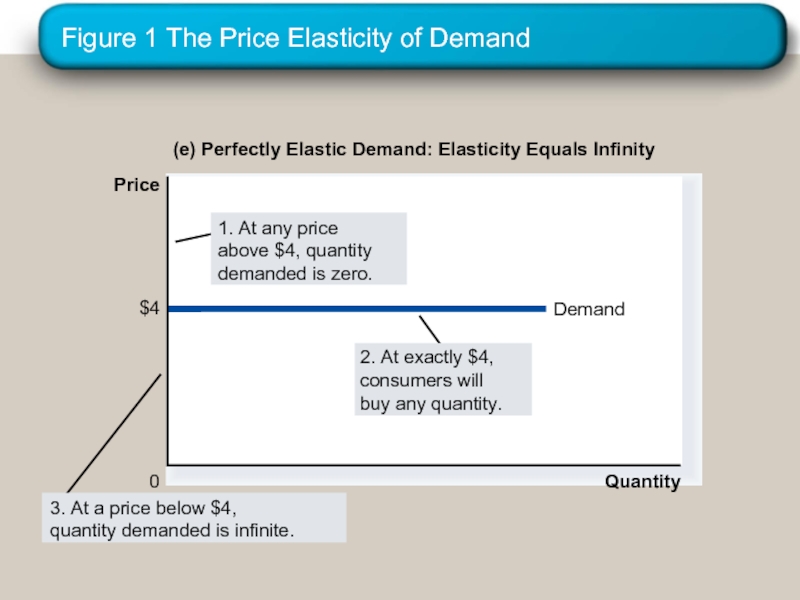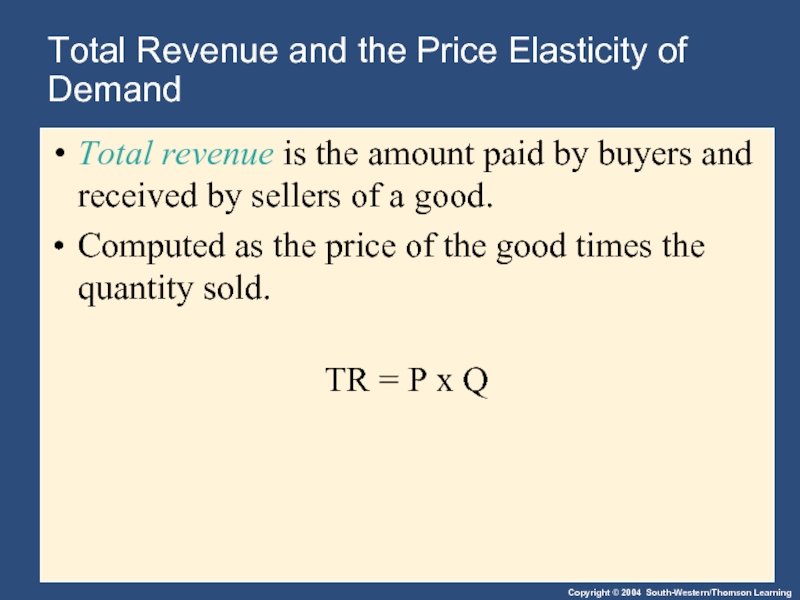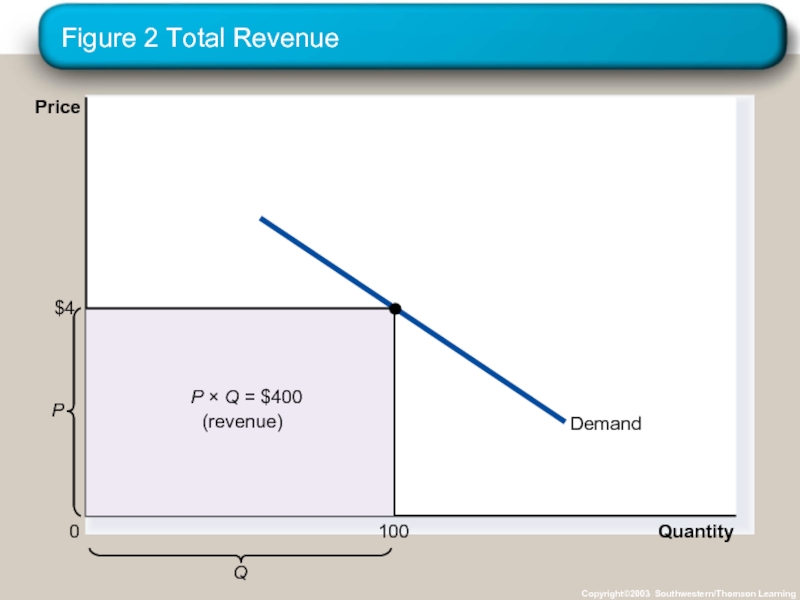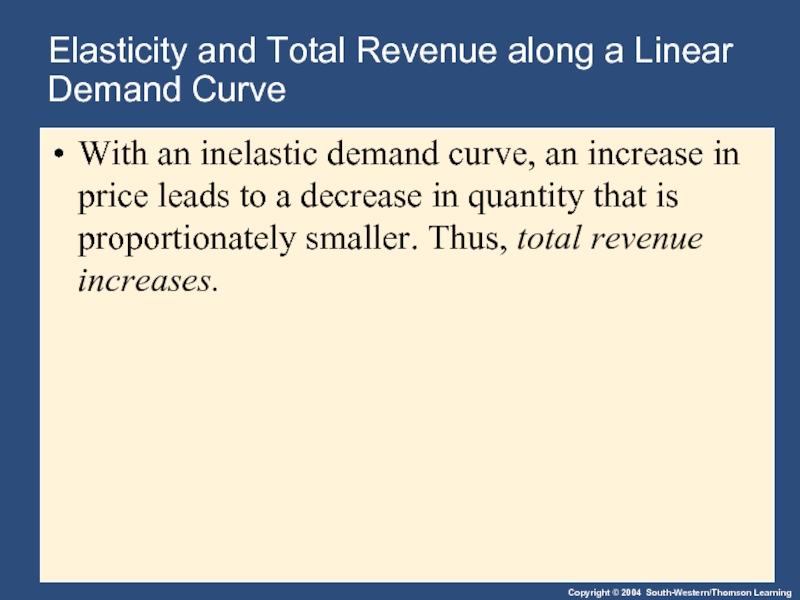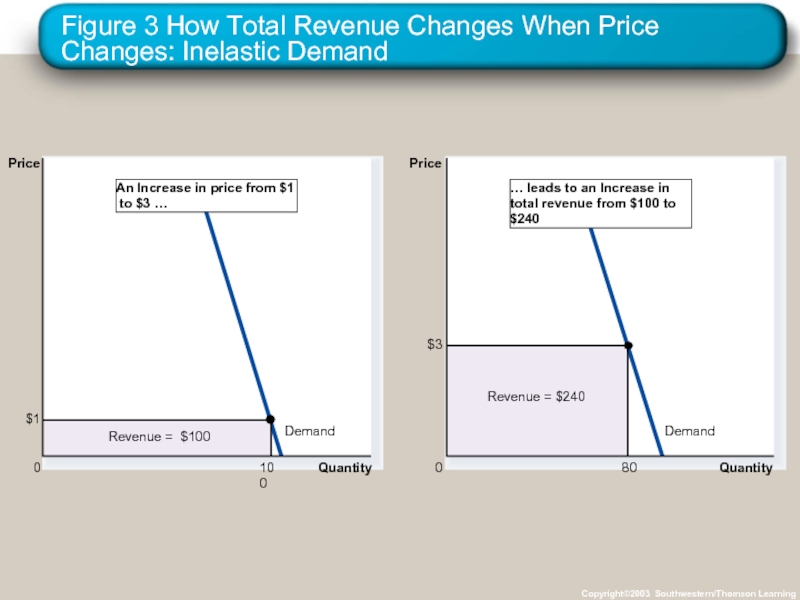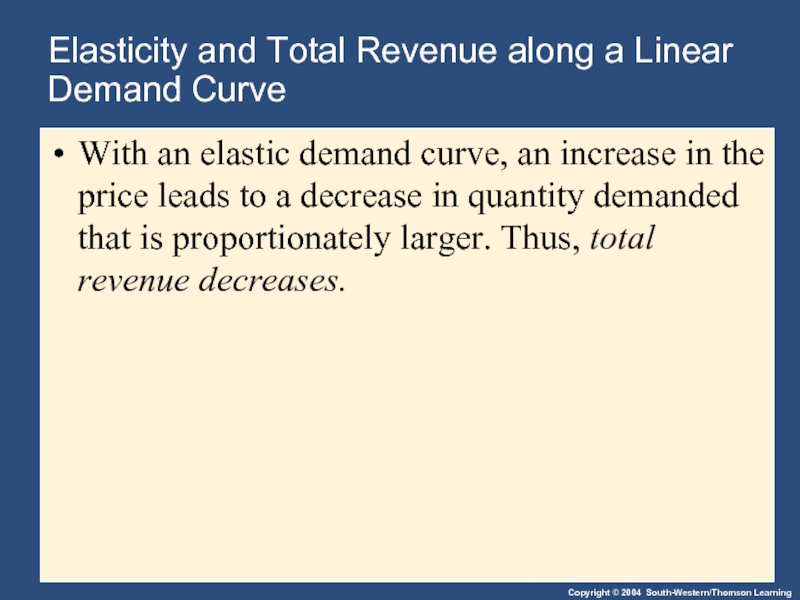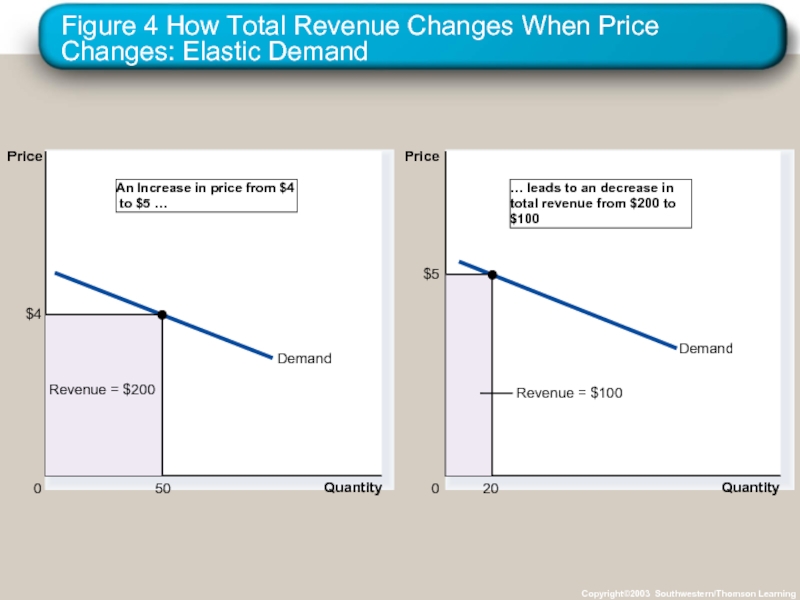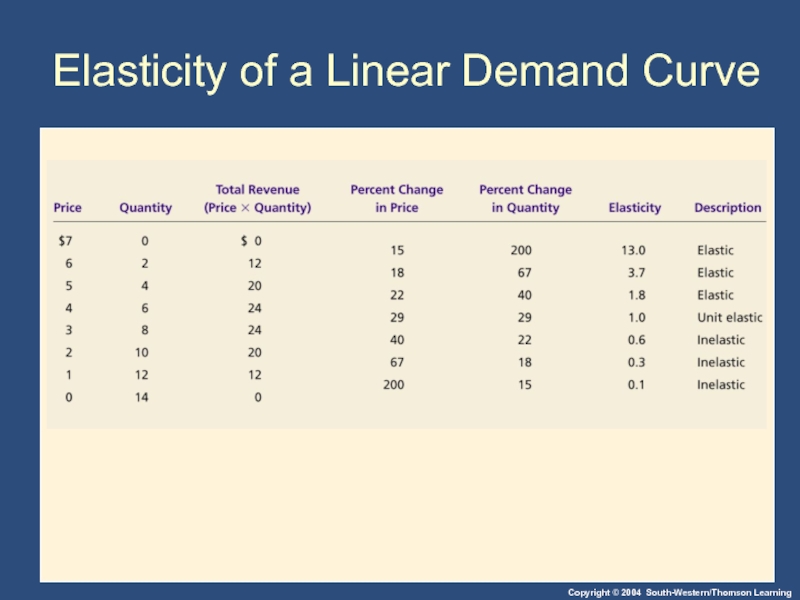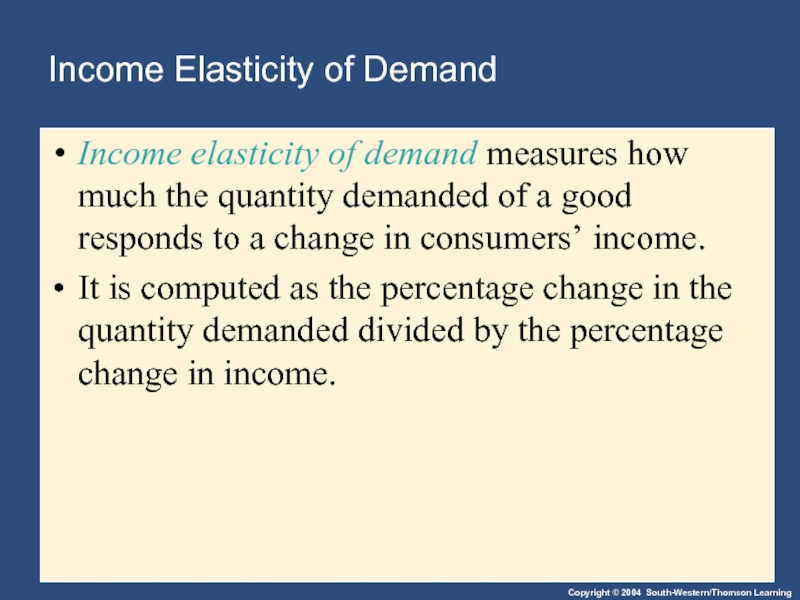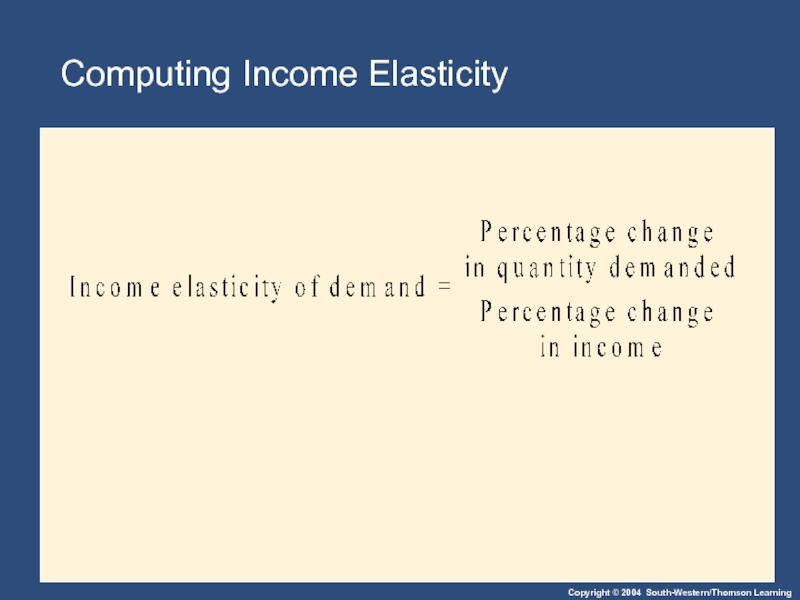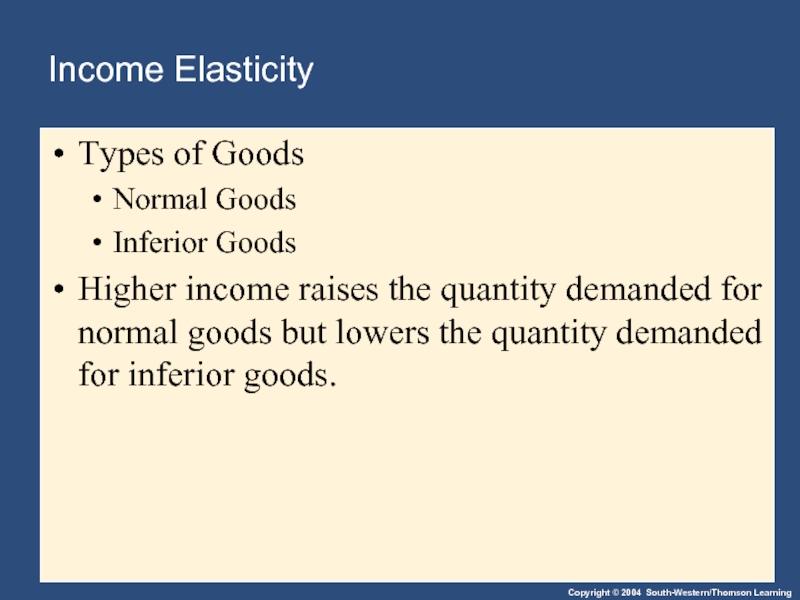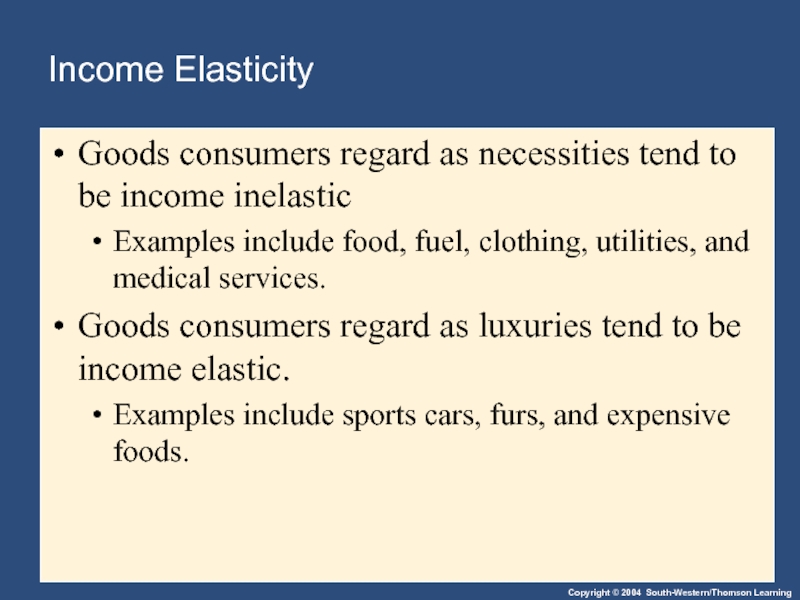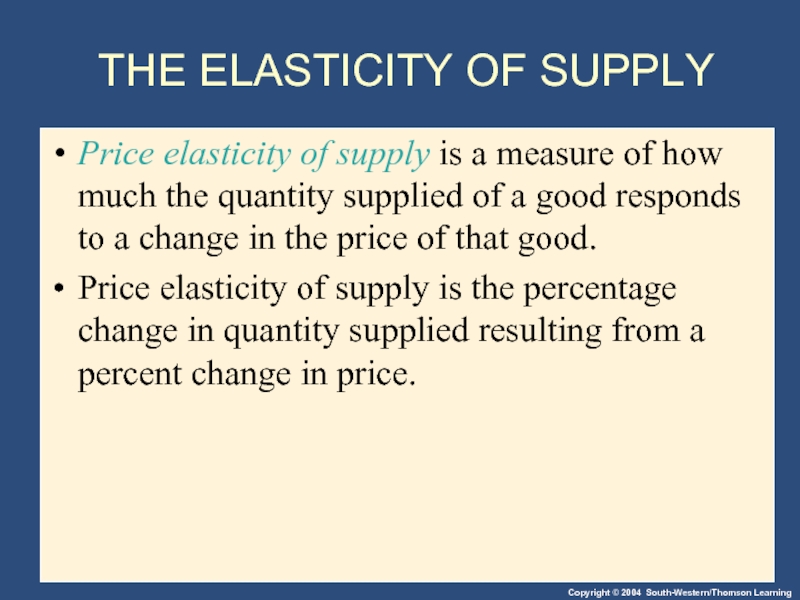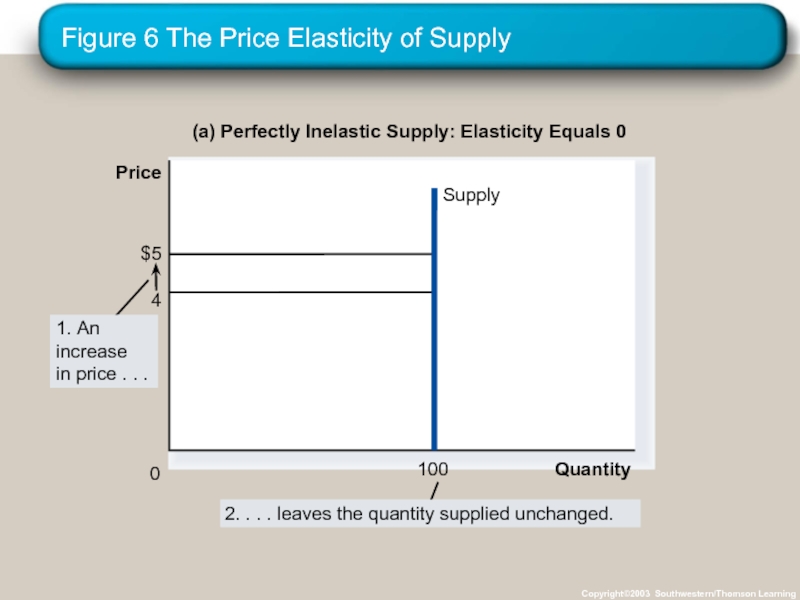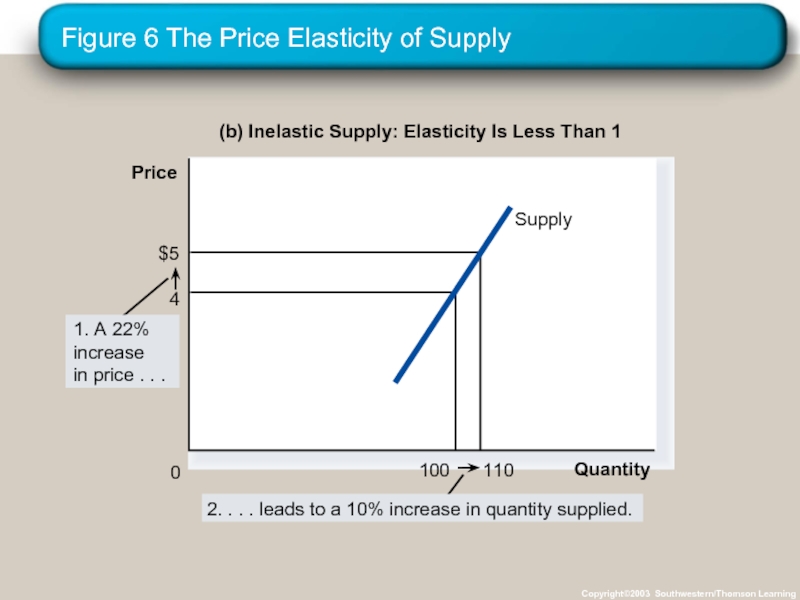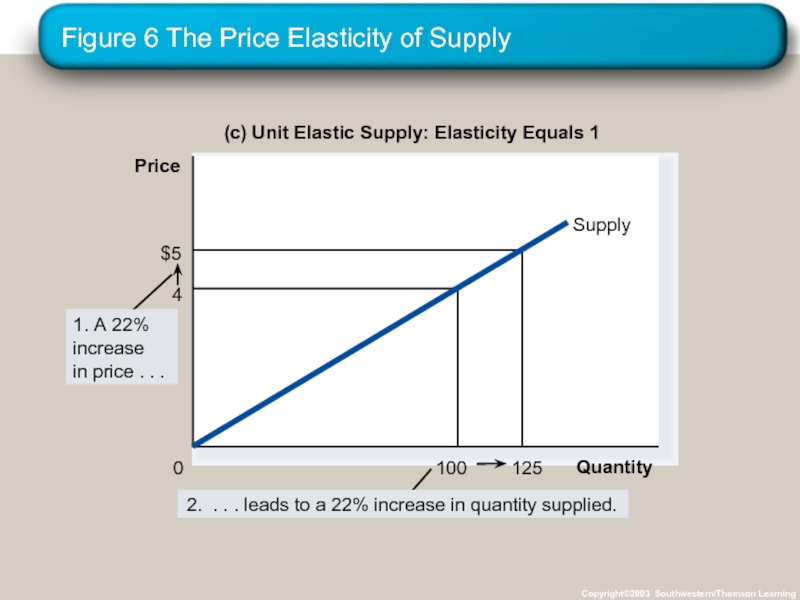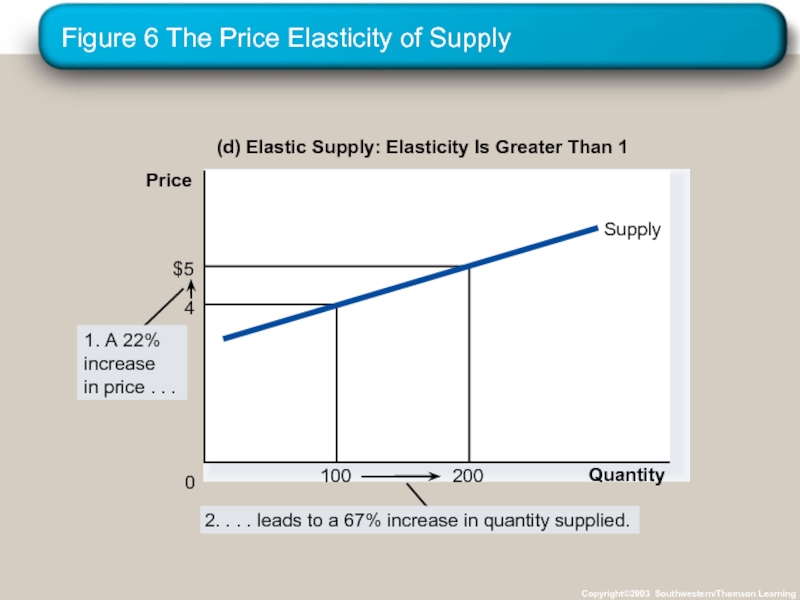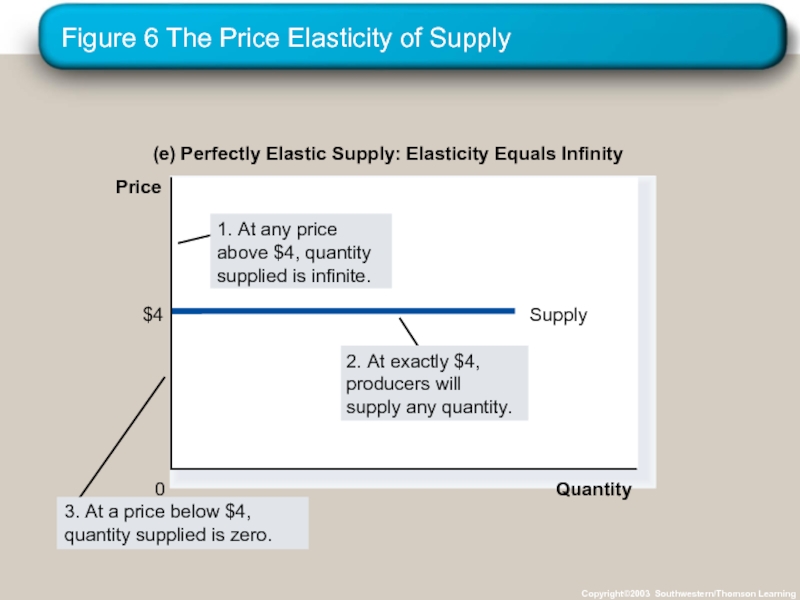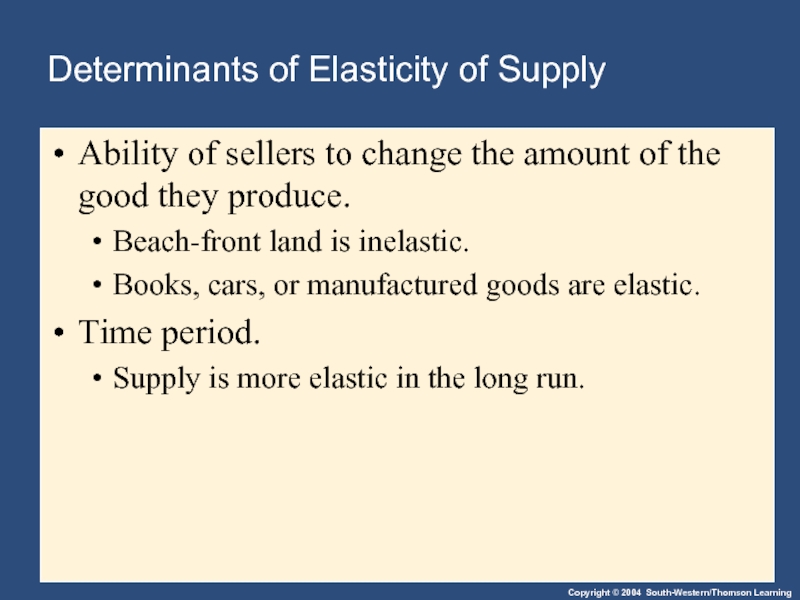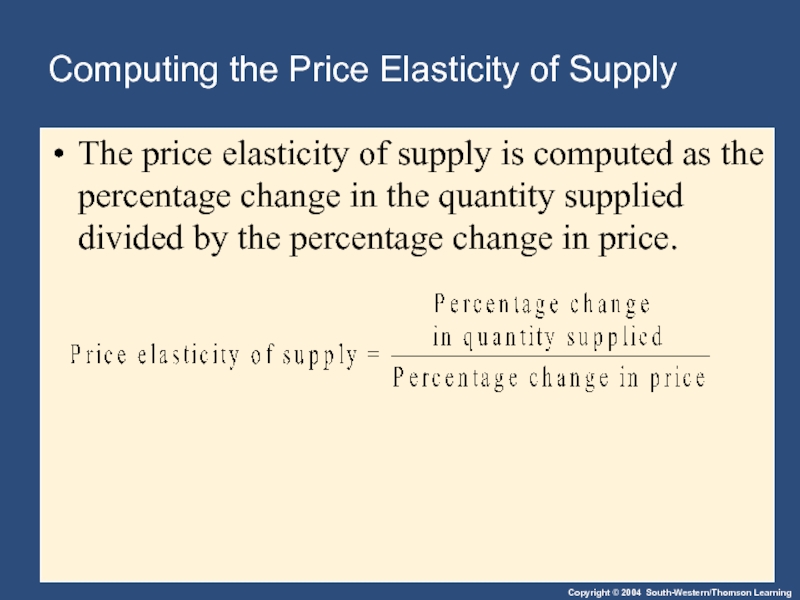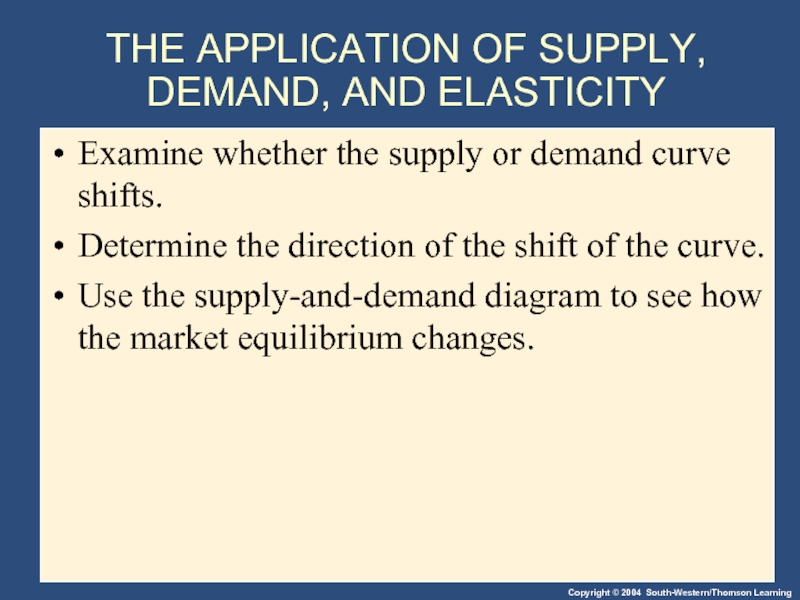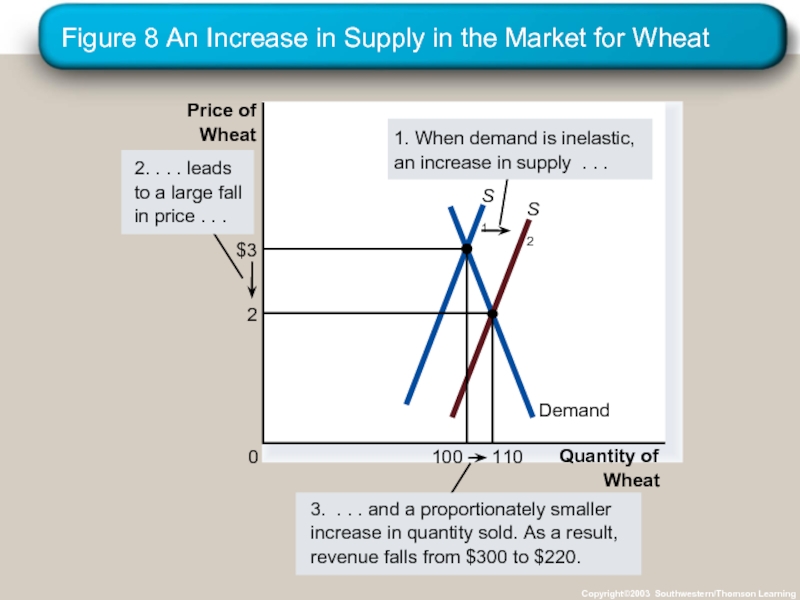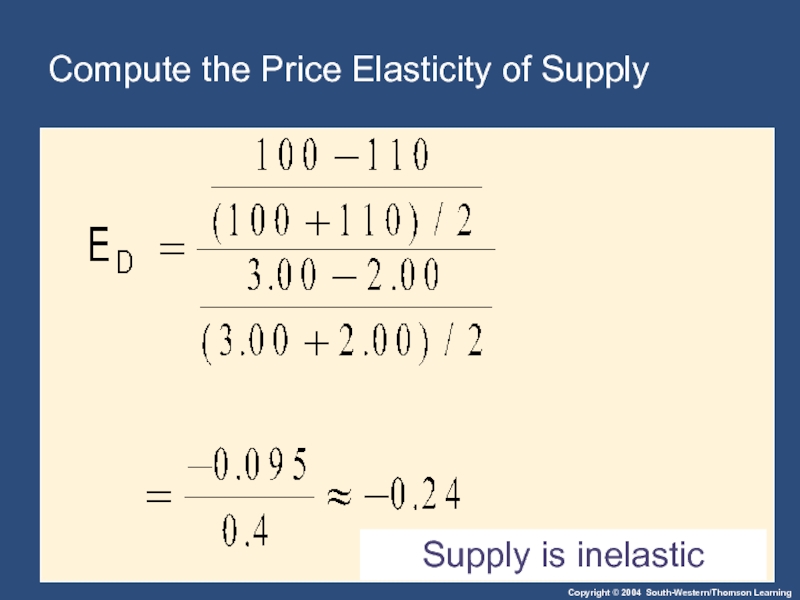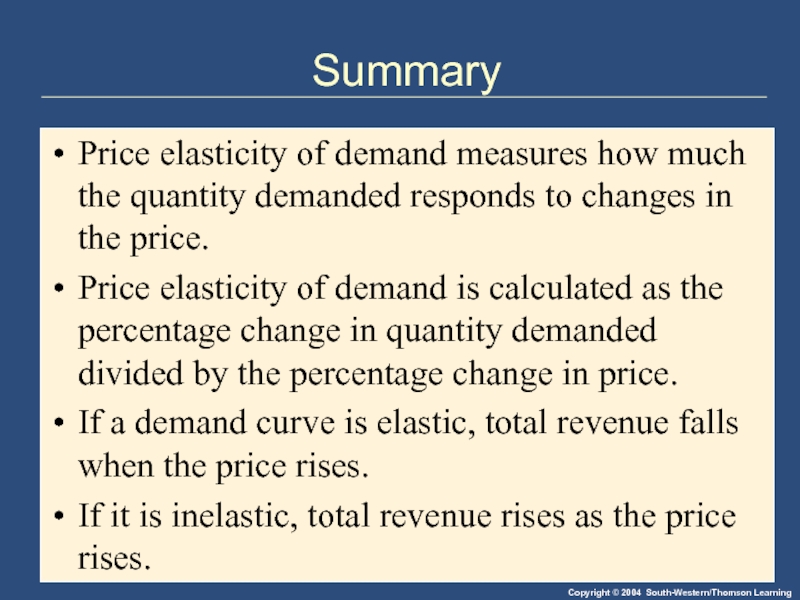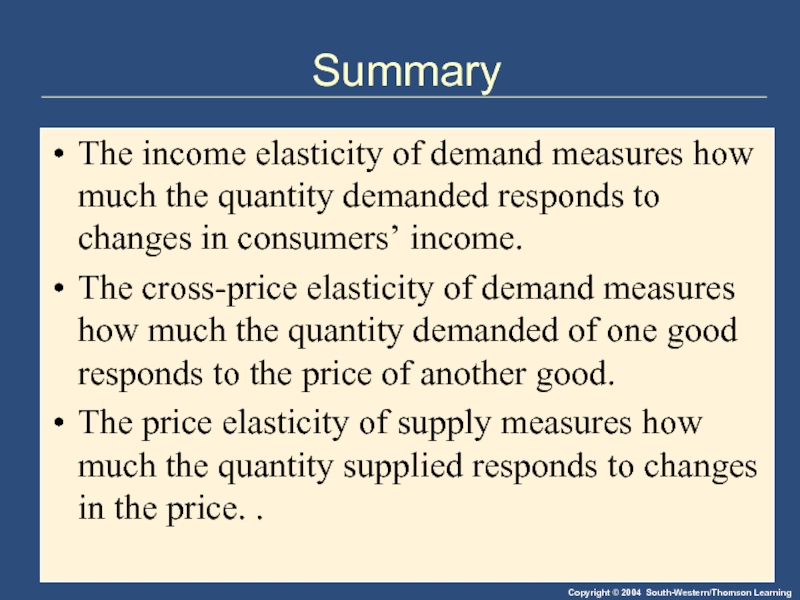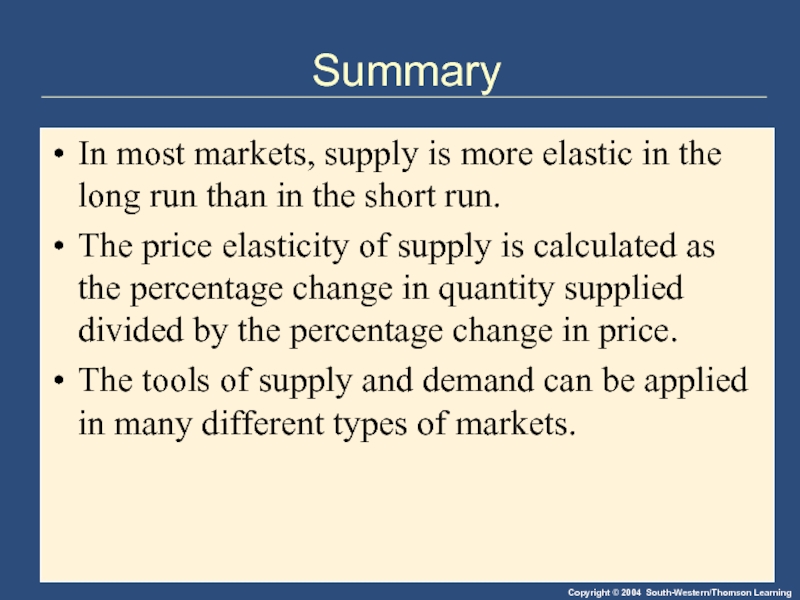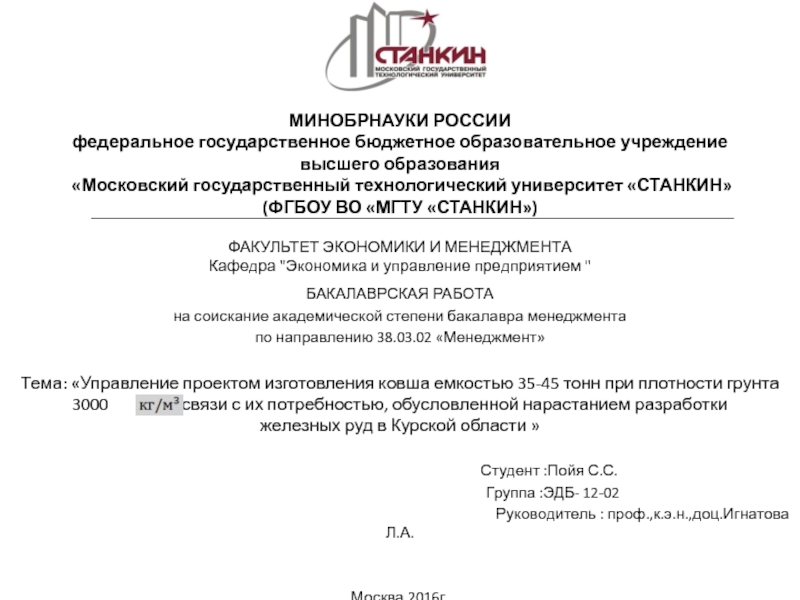- Главная
- Разное
- Дизайн
- Бизнес и предпринимательство
- Аналитика
- Образование
- Развлечения
- Красота и здоровье
- Финансы
- Государство
- Путешествия
- Спорт
- Недвижимость
- Армия
- Графика
- Культурология
- Еда и кулинария
- Лингвистика
- Английский язык
- Астрономия
- Алгебра
- Биология
- География
- Детские презентации
- Информатика
- История
- Литература
- Маркетинг
- Математика
- Медицина
- Менеджмент
- Музыка
- МХК
- Немецкий язык
- ОБЖ
- Обществознание
- Окружающий мир
- Педагогика
- Русский язык
- Технология
- Физика
- Философия
- Химия
- Шаблоны, картинки для презентаций
- Экология
- Экономика
- Юриспруденция
Elasticity and its applications. The elasticity of demand презентация
Содержание
- 1. Elasticity and its applications. The elasticity of demand
- 2. Elasticity . . . … allows
- 3. THE ELASTICITY OF DEMAND Price elasticity of
- 4. The Price Elasticity of Demand and Its
- 5. The Price Elasticity of Demand and Its
- 6. Computing the Price Elasticity of Demand The
- 7. Example: If the price of
- 8. The Midpoint Method: A Better Way to
- 9. The Midpoint Method: A Better Way to
- 10. The Variety of Demand Curves Inelastic Demand
- 11. Computing the Price Elasticity of Demand Demand
- 12. The Variety of Demand Curves Perfectly Inelastic
- 13. The Variety of Demand Curves Because the
- 14. Figure 1 The Price Elasticity of Demand
- 15. Figure 1 The Price Elasticity of Demand
- 16. Figure 1 The Price Elasticity of Demand
- 17. Figure 1 The Price Elasticity of Demand
- 18. Figure 1 The Price Elasticity of Demand
- 19. Total Revenue and the Price Elasticity of
- 20. Figure 2 Total Revenue Copyright©2003 Southwestern/Thomson Learning
- 21. Elasticity and Total Revenue along a Linear
- 22. Figure 3 How Total Revenue Changes When
- 23. Elasticity and Total Revenue along a Linear
- 24. Figure 4 How Total Revenue Changes When
- 25. Elasticity of a Linear Demand Curve
- 26. Income Elasticity of Demand Income elasticity of
- 27. Computing Income Elasticity
- 28. Income Elasticity Types of Goods Normal Goods
- 29. Income Elasticity Goods consumers regard as necessities
- 30. THE ELASTICITY OF SUPPLY Price elasticity of
- 31. Figure 6 The Price Elasticity of Supply
- 32. Figure 6 The Price Elasticity of Supply
- 33. Figure 6 The Price Elasticity of Supply
- 34. Figure 6 The Price Elasticity of Supply
- 35. Figure 6 The Price Elasticity of Supply
- 36. Determinants of Elasticity of Supply Ability of
- 37. Computing the Price Elasticity of Supply The
- 38. APPLICATION of ELASTICITY Can good news for
- 39. THE APPLICATION OF SUPPLY, DEMAND, AND ELASTICITY
- 40. Figure 8 An Increase in Supply in
- 41. Compute the Price Elasticity of Supply Supply is inelastic
- 42. Summary Price elasticity of demand measures how
- 43. Summary The income elasticity of demand measures
- 44. Summary In most markets, supply is more
Слайд 2Elasticity . . .
… allows us to analyze supply and
… is a measure of how much buyers and sellers respond to changes in market conditions
Слайд 3THE ELASTICITY OF DEMAND
Price elasticity of demand is a measure of
Price elasticity of demand is the percentage change in quantity demanded given a percent change in the price.
Слайд 4The Price Elasticity of Demand and Its Determinants
Availability of Close Substitutes
Necessities
Definition of the Market
Time Horizon
Слайд 5The Price Elasticity of Demand and Its Determinants
Demand tends to be
the larger the number of close substitutes.
if the good is a luxury.
the more narrowly defined the market.
the longer the time period.
Слайд 6Computing the Price Elasticity of Demand
The price elasticity of demand is
Слайд 7
Example: If the price of an ice cream cone increases from
Computing the Price Elasticity of Demand
Слайд 8The Midpoint Method: A Better Way to Calculate Percentage Changes and
The midpoint formula is preferable when calculating the price elasticity of demand because it gives the same answer regardless of the direction of the change.
Слайд 9The Midpoint Method: A Better Way to Calculate Percentage Changes and
Example: If the price of an ice cream cone increases from $2.00 to $2.20 and the amount you buy falls from 10 to 8 cones, then your elasticity of demand, using the midpoint formula, would be calculated as:
Слайд 10The Variety of Demand Curves
Inelastic Demand
Quantity demanded does not respond strongly
Price elasticity of demand is less than one.
Elastic Demand
Quantity demanded responds strongly to changes in price.
Price elasticity of demand is greater than one.
Слайд 12The Variety of Demand Curves
Perfectly Inelastic
Quantity demanded does not respond to
Perfectly Elastic
Quantity demanded changes infinitely with any change in price.
Unit Elastic
Quantity demanded changes by the same percentage as the price.
Слайд 13The Variety of Demand Curves
Because the price elasticity of demand measures
Слайд 14Figure 1 The Price Elasticity of Demand
Copyright©2003 Southwestern/Thomson Learning
(a) Perfectly Inelastic
Quantity
0
Price
Слайд 15Figure 1 The Price Elasticity of Demand
(b) Inelastic Demand: Elasticity Is
Quantity
0
Price
Слайд 16Figure 1 The Price Elasticity of Demand
Copyright©2003 Southwestern/Thomson Learning
(c) Unit Elastic
Quantity
0
Price
Слайд 17Figure 1 The Price Elasticity of Demand
(d) Elastic Demand: Elasticity Is
Quantity
0
Price
Слайд 18Figure 1 The Price Elasticity of Demand
(e) Perfectly Elastic Demand: Elasticity
Quantity
0
Price
Слайд 19Total Revenue and the Price Elasticity of Demand
Total revenue is the
Computed as the price of the good times the quantity sold.
TR = P x Q
Слайд 21Elasticity and Total Revenue along a Linear Demand Curve
With an inelastic
Слайд 22Figure 3 How Total Revenue Changes When Price Changes: Inelastic Demand
Copyright©2003
Quantity
0
Price
Quantity
0
Price
An Increase in price from $1
to $3 …
… leads to an Increase in total revenue from $100 to $240
Слайд 23Elasticity and Total Revenue along a Linear Demand Curve
With an elastic
Слайд 24Figure 4 How Total Revenue Changes When Price Changes: Elastic Demand
Copyright©2003
Quantity
0
Price
Quantity
0
Price
An Increase in price from $4
to $5 …
… leads to an decrease in total revenue from $200 to $100
Слайд 26Income Elasticity of Demand
Income elasticity of demand measures how much the
It is computed as the percentage change in the quantity demanded divided by the percentage change in income.
Слайд 28Income Elasticity
Types of Goods
Normal Goods
Inferior Goods
Higher income raises the quantity demanded
Слайд 29Income Elasticity
Goods consumers regard as necessities tend to be income inelastic
Examples
Goods consumers regard as luxuries tend to be income elastic.
Examples include sports cars, furs, and expensive foods.
Слайд 30THE ELASTICITY OF SUPPLY
Price elasticity of supply is a measure of
Price elasticity of supply is the percentage change in quantity supplied resulting from a percent change in price.
Слайд 31Figure 6 The Price Elasticity of Supply
Copyright©2003 Southwestern/Thomson Learning
(a) Perfectly Inelastic
Quantity
100
0
Price
Слайд 32Figure 6 The Price Elasticity of Supply
Copyright©2003 Southwestern/Thomson Learning
(b) Inelastic Supply:
Quantity
0
Price
Слайд 33Figure 6 The Price Elasticity of Supply
Copyright©2003 Southwestern/Thomson Learning
(c) Unit Elastic
Quantity
0
Price
Слайд 34Figure 6 The Price Elasticity of Supply
Copyright©2003 Southwestern/Thomson Learning
(d) Elastic Supply:
Quantity
0
Price
Слайд 35Figure 6 The Price Elasticity of Supply
Copyright©2003 Southwestern/Thomson Learning
(e) Perfectly Elastic
Quantity
0
Price
Слайд 36Determinants of Elasticity of Supply
Ability of sellers to change the amount
Beach-front land is inelastic.
Books, cars, or manufactured goods are elastic.
Time period.
Supply is more elastic in the long run.
Слайд 37Computing the Price Elasticity of Supply
The price elasticity of supply is
Слайд 38APPLICATION of ELASTICITY
Can good news for farming be bad news for
What happens to wheat farmers and the market for wheat when university agronomists discover a new wheat hybrid that is more productive than existing varieties?
Слайд 39THE APPLICATION OF SUPPLY, DEMAND, AND ELASTICITY
Examine whether the supply or
Determine the direction of the shift of the curve.
Use the supply-and-demand diagram to see how the market equilibrium changes.
Слайд 40Figure 8 An Increase in Supply in the Market for Wheat
Copyright©2003
Quantity of
Wheat
0
Price of
Wheat
Слайд 42Summary
Price elasticity of demand measures how much the quantity demanded responds
Price elasticity of demand is calculated as the percentage change in quantity demanded divided by the percentage change in price.
If a demand curve is elastic, total revenue falls when the price rises.
If it is inelastic, total revenue rises as the price rises.
Слайд 43Summary
The income elasticity of demand measures how much the quantity demanded
The cross-price elasticity of demand measures how much the quantity demanded of one good responds to the price of another good.
The price elasticity of supply measures how much the quantity supplied responds to changes in the price. .
Слайд 44Summary
In most markets, supply is more elastic in the long run
The price elasticity of supply is calculated as the percentage change in quantity supplied divided by the percentage change in price.
The tools of supply and demand can be applied in many different types of markets.
